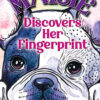 Hello from Crystal Bowman. I am happy to tell you that I am spending the summer in Michigan rather than my home in Florida. I have three grandhildren in Michigan, so besides the beautiful weather, those are three great reasons to be here! I have been writing for children for over 25 years and also have an editing service for children’s writers who are trying to get their books published. When I review proposals, I often see a good proposal with the manuscript tacked on at the end. What I often don’t see is a paginated manuscript.
Hello from Crystal Bowman. I am happy to tell you that I am spending the summer in Michigan rather than my home in Florida. I have three grandhildren in Michigan, so besides the beautiful weather, those are three great reasons to be here! I have been writing for children for over 25 years and also have an editing service for children’s writers who are trying to get their books published. When I review proposals, I often see a good proposal with the manuscript tacked on at the end. What I often don’t see is a paginated manuscript.
Many writers are not aware that a manuscript for a children’s book needs to be paginated. Even though the author will have little or no say in the illustrations, much thought needs to be given to the illustrations while the writer is writing the text.
Boardbooks are anywhere from 12 to 18 pages, and are created with two-page spreads. So if the boardbook is only 12 pages, the text needs to be written for six spreads. The text for each spread needs to be something an illustrator can create in one scene. Though not every word needs to be reflected in the art, the writer cannot have two different scenes included in one spread.
Pictures books are anywhere from 24-48 pages and can allow for a little more context, since the text is not as dependent on the illustrations as in a boardbook. The writer must still think about the illustrations and consider what part of the text could be illustrated on each page, or every other page.


The text and illustrations for a boardbook begin right after the cover on the first spread. The very brief author bio and copyright information go on the back cover so no extra pages are needed for that.
The text for picture books usually begins on page 4. The first three pages are used for a title page, copyright info, dedication, and sometimes an introduction. In a 32-page picture book, the text ends on page 31. Page 32 is used for the author and illustrator bios.
When a writer paginates his or her manuscript, it shows the publisher that thought has been given to the structure of the story and the layout of the text. It is possible that the design and layout person might make revisions to the writer’s suggested pagination, but that’s much better than turning in a manuscript with no pagination.
The more you learn about writing for children, the harder it gets. But the more you learn and the more you know, the more you increase your chances of getting published. Writing for kids is fun, but never easy.
Crystal


Ava Pennington
July 29, 2016 - 10 : 29 : 48Practical tips – thank you, Crystal!
Reply